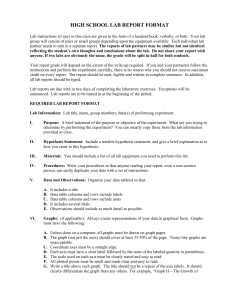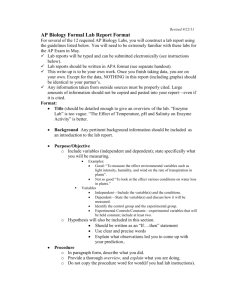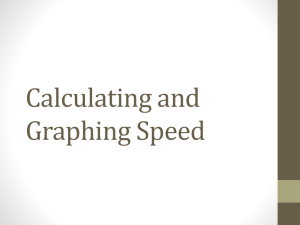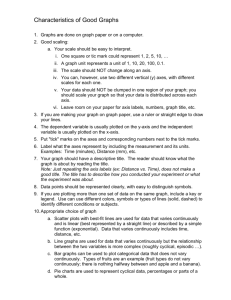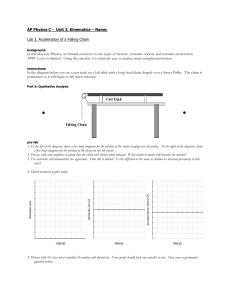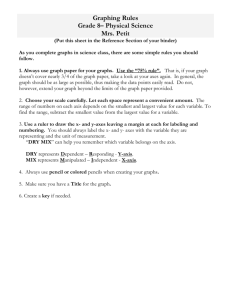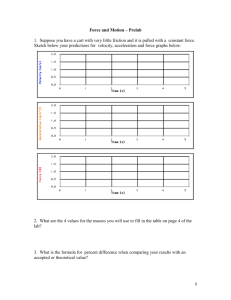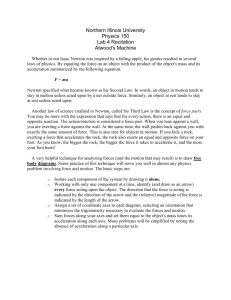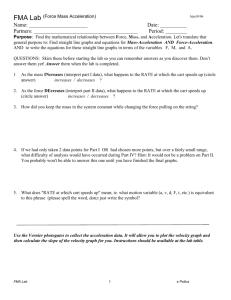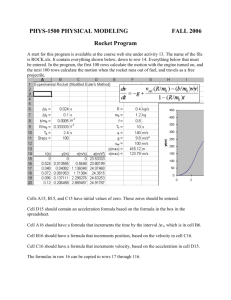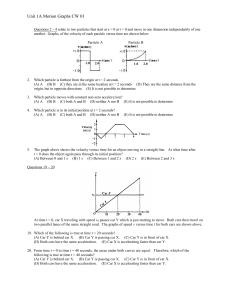required lab report format
advertisement
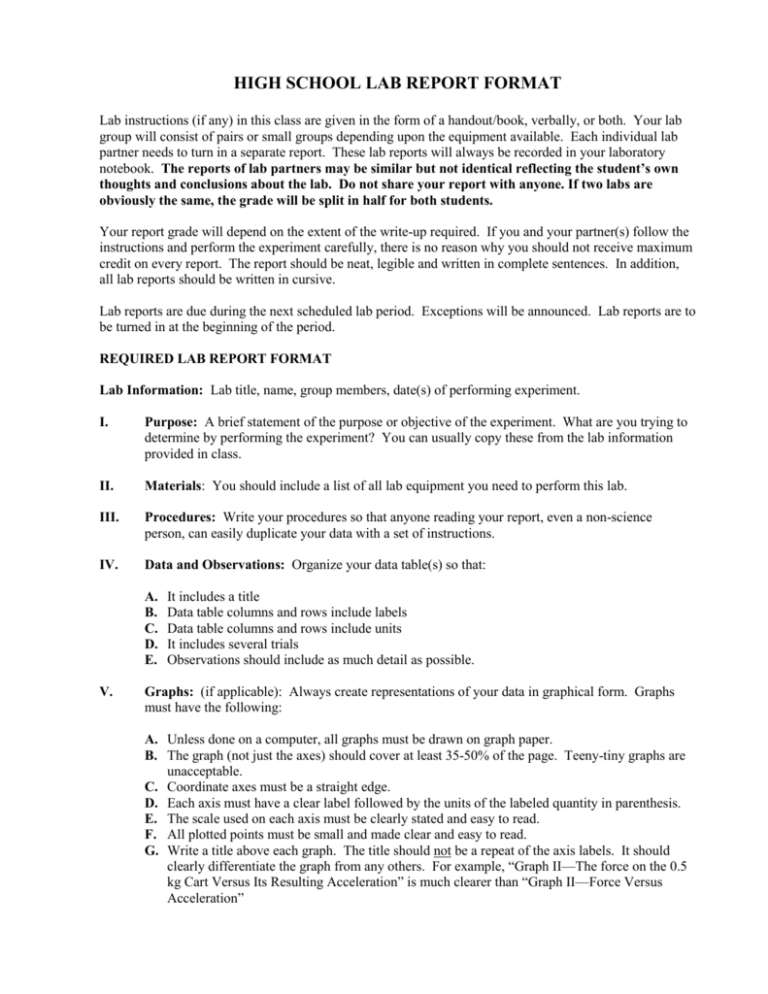
HIGH SCHOOL LAB REPORT FORMAT Lab instructions (if any) in this class are given in the form of a handout/book, verbally, or both. Your lab group will consist of pairs or small groups depending upon the equipment available. Each individual lab partner needs to turn in a separate report. These lab reports will always be recorded in your laboratory notebook. The reports of lab partners may be similar but not identical reflecting the student’s own thoughts and conclusions about the lab. Do not share your report with anyone. If two labs are obviously the same, the grade will be split in half for both students. Your report grade will depend on the extent of the write-up required. If you and your partner(s) follow the instructions and perform the experiment carefully, there is no reason why you should not receive maximum credit on every report. The report should be neat, legible and written in complete sentences. In addition, all lab reports should be written in cursive. Lab reports are due during the next scheduled lab period. Exceptions will be announced. Lab reports are to be turned in at the beginning of the period. REQUIRED LAB REPORT FORMAT Lab Information: Lab title, name, group members, date(s) of performing experiment. I. Purpose: A brief statement of the purpose or objective of the experiment. What are you trying to determine by performing the experiment? You can usually copy these from the lab information provided in class. II. Materials: You should include a list of all lab equipment you need to perform this lab. III. Procedures: Write your procedures so that anyone reading your report, even a non-science person, can easily duplicate your data with a set of instructions. IV. Data and Observations: Organize your data table(s) so that: A. B. C. D. E. V. It includes a title Data table columns and rows include labels Data table columns and rows include units It includes several trials Observations should include as much detail as possible. Graphs: (if applicable): Always create representations of your data in graphical form. Graphs must have the following: A. Unless done on a computer, all graphs must be drawn on graph paper. B. The graph (not just the axes) should cover at least 35-50% of the page. Teeny-tiny graphs are unacceptable. C. Coordinate axes must be a straight edge. D. Each axis must have a clear label followed by the units of the labeled quantity in parenthesis. E. The scale used on each axis must be clearly stated and easy to read. F. All plotted points must be small and made clear and easy to read. G. Write a title above each graph. The title should not be a repeat of the axis labels. It should clearly differentiate the graph from any others. For example, “Graph II—The force on the 0.5 kg Cart Versus Its Resulting Acceleration” is much clearer than “Graph II—Force Versus Acceleration” VI. Calculations (if applicable): Explain and carefully show the steps for any mathematical calculations. Be sure to include all equations and formulas used. (Chemistry and physics students should follow significant digit rules.) All final answers should include the units. VII. Analysis Questions: Effectively communicate your answers to questions. Assume the reader of your report has not read the questions in the lab handout. All answers should be written in complete sentences that do not require the reader to guess what the question was. The answers to questions should NEVER begin with the words “it” or “they”. For example, in responding to the question: “What can you conclude from your velocity versus time graph about the acceleration of the cart?” A proper response would be “Since the velocity versus time graph is a straight line, the acceleration of the object is constant. OR If you are unable to write effective sentences as described above, you may write the questions followed by your answers. No points will be deducted. VIII. Conclusions: Recall that you performed the experiment with a specific purpose in mind. This section of the report is a brief statement of your results and whether or not you achieved the purpose of the experiment. Many readers of experiments read the conclusions first before looking at the details of the experiment. In other words, if you write a GOOD conclusion, then readers might be interested in your experiment. You should write at least one sentence for the following: What was the purpose of the lab? How does the lab we performed relate to what we are studying in class? Give a brief recap of the procedure used. What problems did you have during the lab? Did you have to modify your procedure? Do your results make sense? If not, why? What are sources of error? What did you learn from this lab? If you were to repeat this lab in the future, how would you modify or improve the procedure? GRADING Each individual section of your lab report will be graded using a 0-10 scale. A 0 will be given if a required section is missing. A 10 will be given to a section which includes all required elements and is done in an outstanding manner. (The lab information, purpose, materials and procedure sections will only be awarded a maximum of 5 points). The final lab report grade will be calculated by dividing the total number of points earned by the total number of possible points and multiplying by 100. Final Grade = (total points earned/total points possible) x 100
